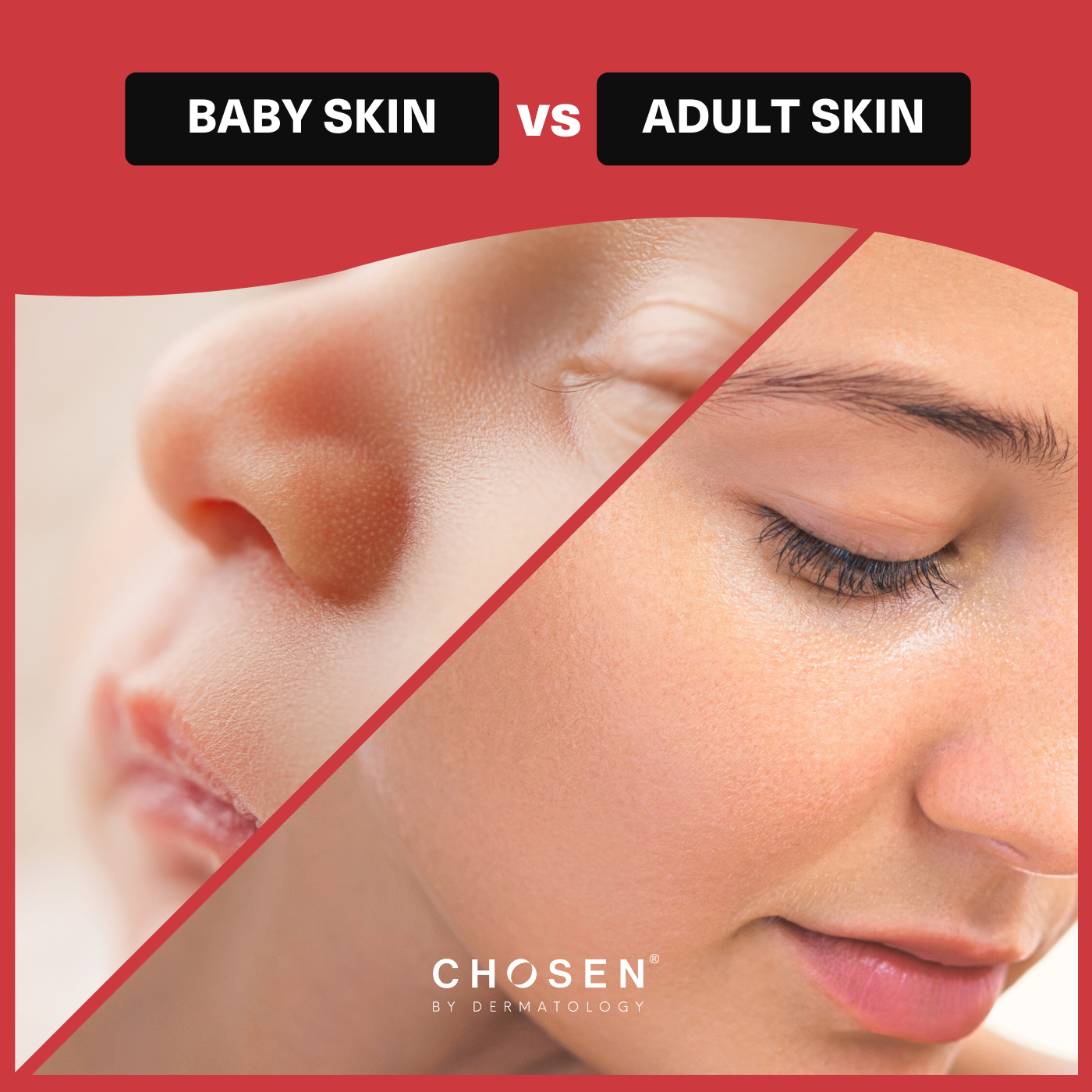We all admire having that soft and supple skin that babies have. But do you know how delicate a baby’s skin is and how much care it needs? Yes, on average, a baby’s skin is 20 to 30% thinner than an adult’s skin, as the outer layers are still in the developing stage. This makes a baby’s skin more prone to irritation and external damage, requiring extra care and attention.
In this article, we discuss the main features that differentiate a baby’s skin from that of adults and how to care for and maintain their skin to keep it healthy and hydrated.

Higher pH:
-
A baby’s skin tends to have a higher pH level (neutral to alkaline) than an adult’s skin(acidic), especially during the infant stage. This is because their skin is still in the process of developing its acid mantle - a protective barrier that helps keep out all the external aggressors.
-
Until the skin barrier completely develops, a baby’s skin is going to be highly permeable, increasing the chances of irritation and infection.
Lower fat/lipid content:
-
Baby skin feels super soft to touch but has less lipid content than adult skin.
-
These lipids are important for maintaining skin hydration and barrier function. However, due to low lipid content, a baby’s skin can lose moisture and dry out easily.
Lower pigment/melanin content:
We know that melanin in our skin protects us from the harsh UV rays. Unlike adult skin, babies have lesser melanin content in their skin, which gradually increases with age. However, at the time of infancy, lower melanin levels and the underdeveloped skin barrier potentially make their skin more sensitive to sun exposure.
Higher water content:
We all would have adored that plump and cushiony feel while handling a baby. The reason is that the baby’s skin is packed with high water content, particularly during the first year. However, babies have a limited water holding capacity, which can make their skin lose moisture quickly, leading to dry and dehydrated skin.
Now, you understand how delicate a baby’s skin is compared to adult skin. Let’s learn how to take care of a baby’s delicate skin. There are two simple things that you can follow in your baby's skin care to maintain the skin healthy and hydrated.
-
Moisturize Regularly:
Moisturizing is an important step in baby skin care. It helps:
-
Replenish lost moisture
-
Strengthen the skin barrier
-
Maintain that soft, supple texture
Best time to apply: Within 3 minutes after a bath, when the skin is still damp, to lock in hydration.
CHOSEN’s Best Baby Moisturizers:
-
Protect from Sun Exposure:
The US FDA recommends avoiding direct sunlight for babies under 6 months.
If you're heading outdoors:
-
Use hats, protective clothing, and shade for your baby.
-
For babies 6 months and older, consider a baby sunscreen lotion like
SAFESCREEN Mom & Baby—a safe & effective mineral sunscreen designed for delicate baby skin.
To make your job easy, CHOSEN has curated a range of the best baby safe skin care products in India for newborns, infants, toddlers and children. You can choose products from these categories based on your needs, but as a precaution, it is best to check with your neonatologist/pediatrician before adding any new product to your baby’s skin care.
You may also like to explore:

